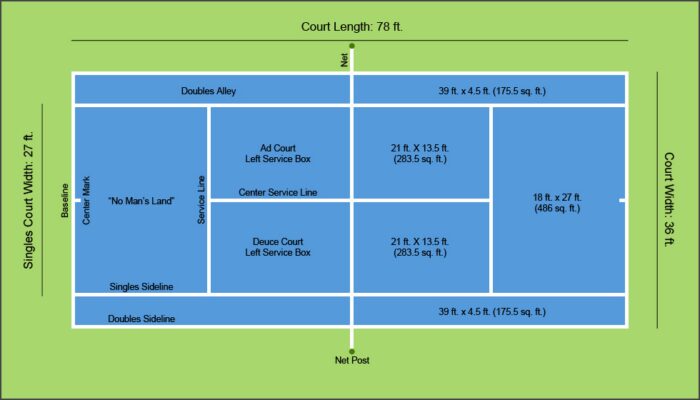
Tennis is a captivating sport that demands both physical prowess and mental acuity. For sports enthusiasts and bettors alike, making accurate predictions can enhance the excitement of the game. However, predicting the outcomes of tennis matches can be a challenging task, requiring a comprehensive understanding of various factors that influence player performance. In this blog post, we will explore ten key strategies for making better tennis predictions. From analyzing player statistics and studying head-to-head records to considering external factors and utilizing advanced analytics, these strategies will provide you with a solid foundation to enhance your tennis predictions.

Understanding the Basics: Tennis Terminology and Rules
Having a solid grasp of the basics allows you to dissect the intricacies of a tennis match and make an accurate tennis prediction. It enables you to comprehend the strategic decisions players make, anticipate their next moves, and identify pivotal moments that can shift the momentum of a match.
By understanding the scoring system, court dimensions, and shot variations, you gain a deeper appreciation for the tactical aspects of the game, enabling you to make more informed predictions and engage in insightful discussions about tennis. So, take the time to immerse yourself in the fundamentals, as they serve as the foundation for making accurate and well-rounded tennis predictions.
Analyzing Player Performance: Key Metrics and Statistics
Player performance analysis forms the cornerstone of successful tennis predictions. By examining key metrics such as win-loss records, service percentages, and return statistics, you can identify athletes’ strengths and weaknesses. Consider a player’s recent form, consistency, and performance on different surfaces to gauge their current level of play. Evaluating these statistics will provide valuable insights into capabilities and help you predict their performance against opponents.
Factors Affecting Performance: Surface, Weather, and Venue Considerations
The playing surface, weather conditions, and venue can significantly impact a player’s performance. Some of them excel on clay courts, while others thrive on hard or grass courts. Assess the playing surface and its compatibility with a player’s style of play. Additionally, weather conditions like wind, heat, or humidity can affect athletes differently. Furthermore, take into account the influence of the venue, including factors like altitude and crowd support. By considering these elements, you can make more accurate predictions regarding player performance under specific conditions.

Studying Head-to-Head Records: Historical Matchups and Rivalries
Examining the head-to-head records between players can provide valuable insights for predictions. Certain sportsmen may have a dominant record against specific opponents due to factors such as playing style or psychological advantage. Look for patterns, historical rivalries, and previous encounters on different surfaces. This analysis will help you gauge how players match up against each other and make informed predictions based on their past performances.
Assessing The Form: Recent Performance and Fitness Levels
A player’s recent form and fitness levels are crucial indicators of their potential performance in upcoming matches. Monitor their performance in recent tournaments, paying attention to wins, losses, and the level of competition faced. Additionally, consider factors like injuries, fatigue, or recent breaks from the game. A player in good form and optimal physical condition is more likely to perform well, increasing the accuracy of your predictions.
Evaluating Playing Styles: Strengths, Weaknesses, and Adaptability
Understanding a person’s playing style is essential for predicting match outcomes. Some of them rely on powerful serves, while others excel in baseline rallies or net play. Analyze their strengths and weaknesses, considering their ability to adapt to different opponents and game situations. A player’s adaptability and versatility can determine their success in various match scenarios. By evaluating playing styles, you can predict how players will fare against specific opponents and tailor your predictions accordingly.

Uncovering Mental Aspects: Psychological Factors and Pressure Situations
The mental aspect of tennis is as crucial as the physical. Assess a player’s mental fortitude, temperament, and ability to handle pressure situations. Consider their performance in tiebreakers, crucial points, or when facing match points. Some people thrive under pressure, while others struggle to maintain composure. Understanding the psychological factors can provide valuable insights into a player’s ability to handle high-stakes situations, allowing you to make more accurate predictions.
Incorporating Data Analytics: Utilizing Advanced Statistics and Machine Learning
In the era of data-driven insights, incorporating data analytics into tennis predictions can significantly enhance accuracy. Utilize advanced statistics and machine learning algorithms to analyze vast amounts of data, including historical records, match statistics, and playing conditions. These analytical tools can identify patterns, trends, and correlations that may not be apparent to the naked eye. By leveraging data analytics, you can make predictions based on empirical evidence and increase the chances of accurate outcomes.
Considering External Factors: Injuries, Fatigue, and Rest Periods
External factors such as player injuries, fatigue, and rest periods can have a substantial impact on match outcomes. Keep track of players’ injury history, recent workload, and the number of matches played. Consider the effects of long tournaments, extensive travel, and lack of sufficient rest on a player’s performance. Being aware of these external factors will help you make more informed predictions, particularly when a player is facing physical or mental challenges.

Combining Expert Insights with Statistical Analysis: Building Well-Informed Predictions
To make the most accurate tennis predictions, it is crucial to combine expert insights with statistical analysis. Stay updated with expert opinions, interviews, and news articles that provide valuable insights into players’ form, strategies, and preparation. Additionally, leverage the statistical analysis discussed earlier to make data-driven predictions. By blending these approaches, you can build well-informed predictions that consider both subjective and objective factors.
Conclusion
Tennis is an exciting sport that can be quite difficult to predict. By taking into account the factors we discussed in this article, however, you can increase your chances of making accurate predictions when it comes to tennis matches. This will help you make more informed decisions and maximize your winnings if you choose to bet on tennis games. With a little practice and strategy, anyone can become an expert at predicting the outcomes of tennis matches!











